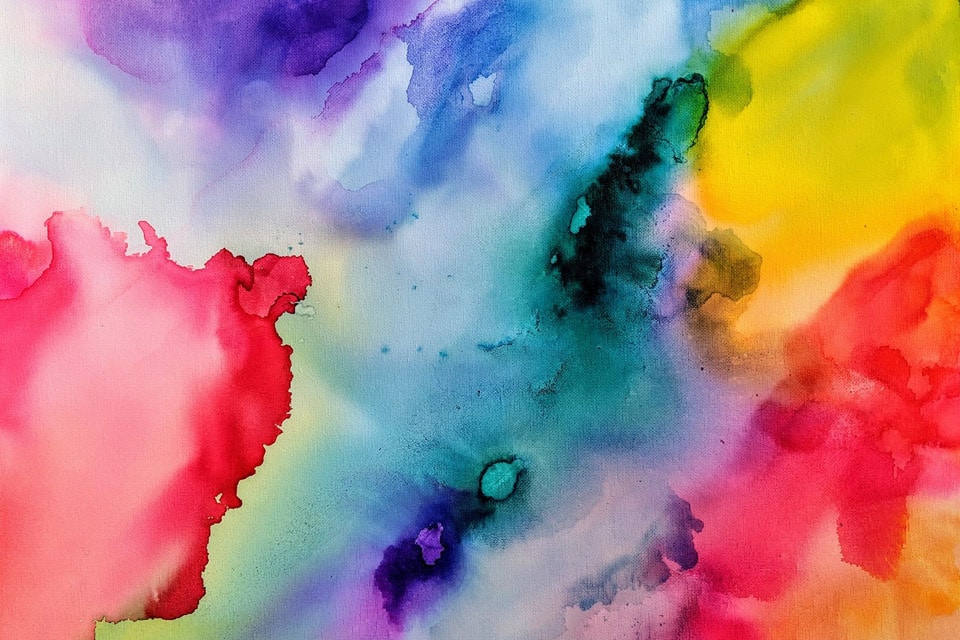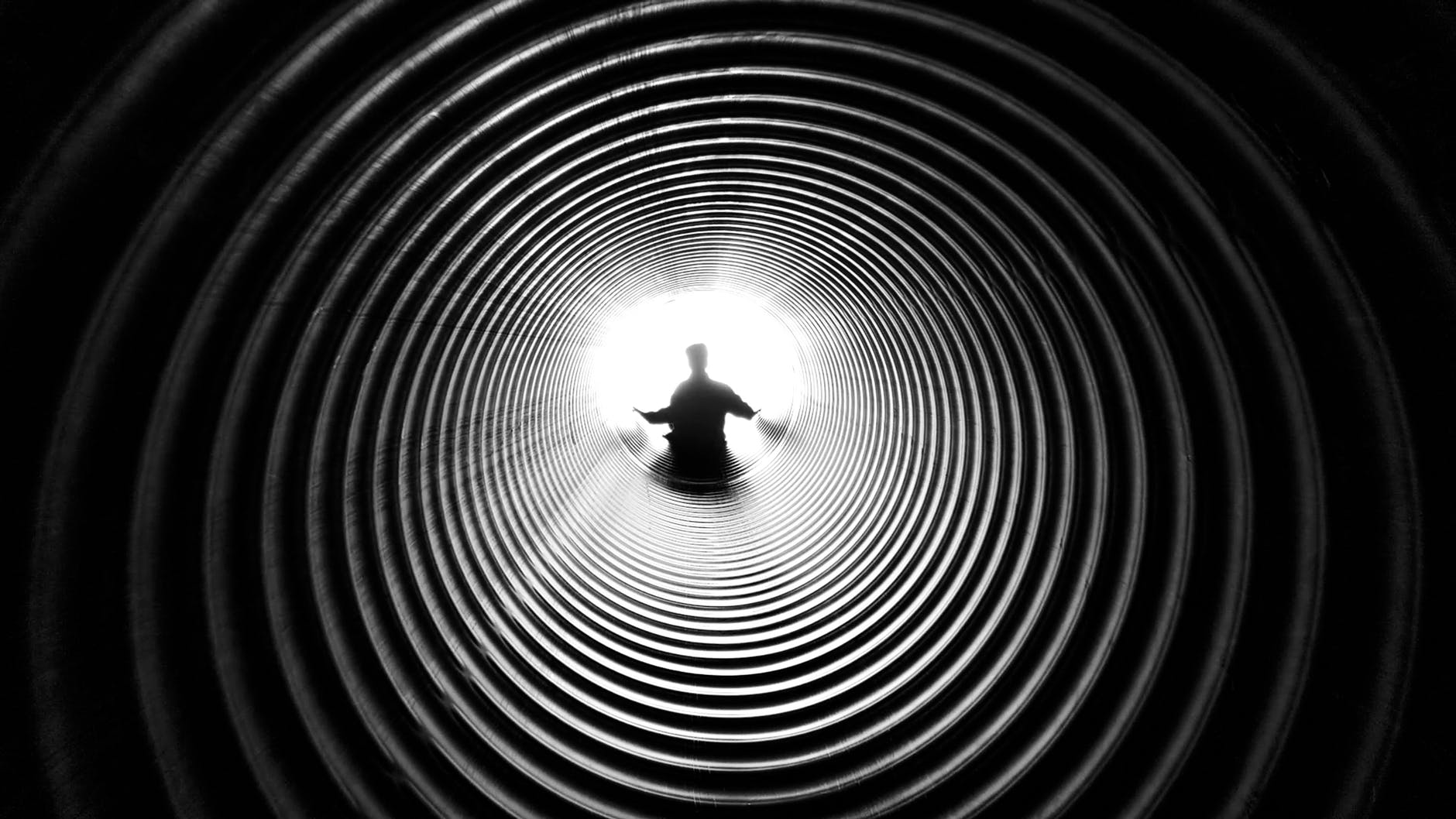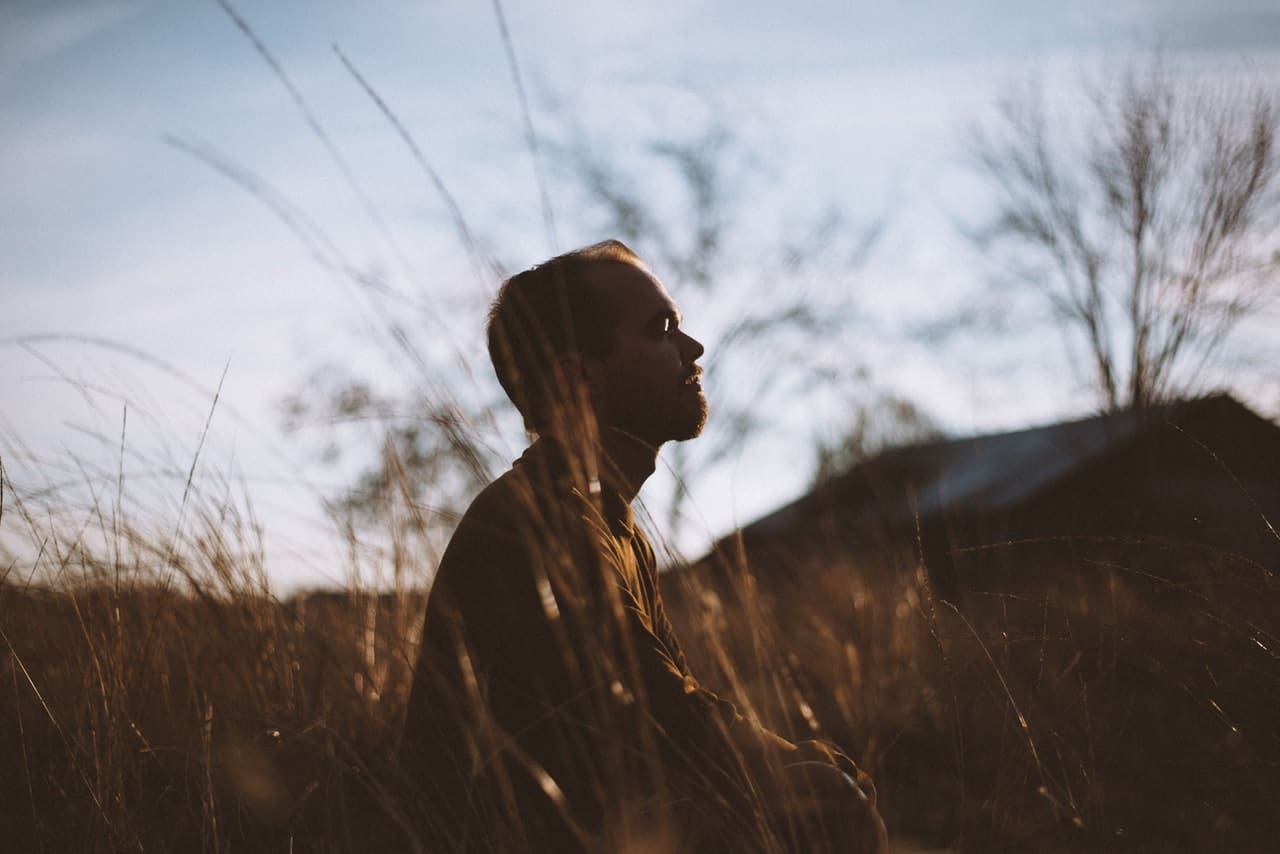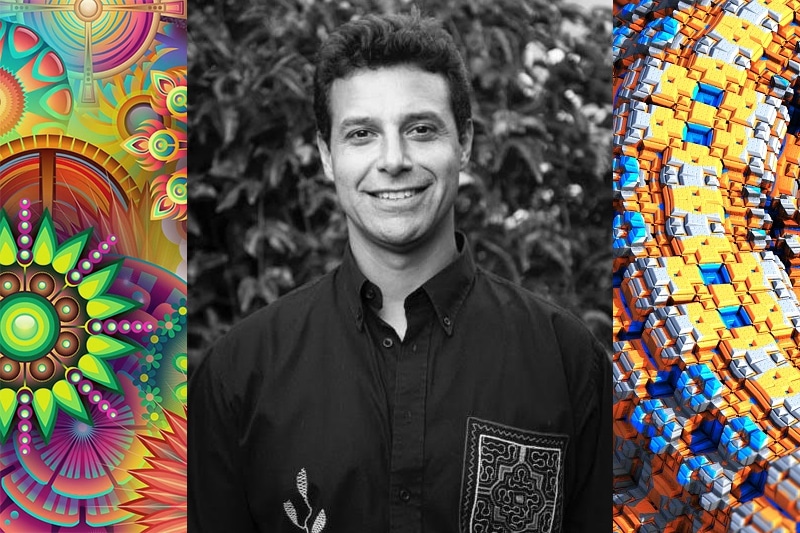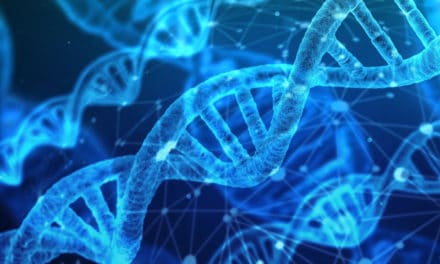At this moment of psychedelic history, MDMA therapy for the treatment of PTSD has been granted Expanded Access by the FDA, psilocybin mushrooms and other plant medicines have been decriminalized in three U.S. cities, ketamine and cannabis are being used in numerous clinics to assist in the treatment of depression, and ayahuasca and ibogaine are being researched to treat conditions ranging from addiction to intercultural trauma. Amidst this movement, the most notorious psychedelic of all is often absent from therapeutic conversations. I’m talking about lysergic acid diethylamide, better known as LSD.
LSD represents the apex of psychedelic stigmatization. Its stigma has been lessened lately by a plethora of anecdotal reports about “microdosing” making people less depressed and/or Silicon-Valley-level productive, but still we hear little talk about large doses in the therapy room. However, much of the foundation of psychedelic-assisted psychotherapy comes from Dr. Stanislav Grof’s work with LSD psychotherapy in the 1970s and ’80s. In LSD Psychotherapy (1980), Grof argues for a male/female co-therapist team—currently used by MAPS in their MDMA protocol—and delineates between high-dose psychedelic and low-dose psycholytic models—a crucial delineation in both ketamine-assisted psychotherapy and burgeoning models for 5-MeO-DMT. Indeed, Rick Doblin, founder of MAPS, regularly cites Grof as his mentor, and just as regularly cites his early experiences with LSD as fundamental and transformative.
So why such shade for LSD? Is it all because of a mighty Nixon-fueled stigma? To help answer these and other questions, I spoke at length with a prominent underground LSD psychotherapist—“H,” as I will refer to them, to maintain anonymity—and as often proves the case with Hoffman’s mysterious creation, our conversation demonstrated that this tiny molecule contains multitudes in its investigation.
An Underground Psychedelic Psychotherapist Speaks
In H’s six years of practicing LSD psychotherapy, they have found that LSD is uniquely effective in helping heal trauma, even compared to MDMA. They explain, “MDMA is amazing for traumatic events that happened as an adult—with rape victims, first responders, war soldiers. With LSD, you can go much further.”
This “much further” includes not only early childhood trauma, but also birth, prenatal and multigenerational trauma. Grof, drawing from thousands of LSD psychotherapy sessions, theorized that the LSD experience parallels four “basic perinatal matrices” (BPMs). Each BPM consists of a web of experience from distinct stages of the birthing process, several of which involve significant trauma. In Grof’s framework, the specific traumas of our lives correlate to a BPM, which also correlate to a transpersonal dimension, which is expressed through a symbol or archetype—it’s way too complex to expound here, so just go ahead and read Grof’s Realms of the Human Unconscious (1975), LSD Psychotherapy (1980), and/or The Way of the Psychonaut (2019) for more info.
For now, let’s settle on the point that trauma often runs deeper than our remembered experiences. When trauma runs too deep for MDMA to unlock, H finds LSD can open the mind to an encounter with that depth, which can be profoundly healing. But that encounter can’t come through low-dose psycholytic therapy: it requires a big psychedelic dose. A standard LSD dose is 100 to 120 μg (micrograms). H’s clients take between 500 and 600 μg.
Why such a large dose?
H explains, “I found that when I worked with 300 or 400, the mind still had the opportunity to grip. 600 is enough for everybody to surrender to the experience.”
The mind likes to cling to familiar narratives. As it does, it seeks answers in the wrong places, blocking what Grof and others have called the “inner healing intelligence.”
“These substances are much stronger than us,” H says. “We cannot direct whatever is going to happen.”
To open to the process, H helps clients form an intention. Yet while people regularly talk about bringing intentions into psychedelic journeys, they often confuse the term with expectation.
“Expectation is a desired outcome, and if you have a desired outcome, you are not free,” H explains. “If you have any expectation of what you want the day to look like, it can lock you in, and then you are not open to whatever is manifesting.”
If someone enters a high-dose session thinking, “I want to heal my childhood trauma,” that, according to H, is too specific of an expectation. Intention, on the other hand, is something you can control, such as how you intend to show up in the room. “I recommend my clients have an intention regarding the quality of their presence,” H says, “like, ‘I intend to be open to whatever comes in.’”
H has recognized that many people try to make sense of their experience as it’s unfolding. As they do, they guide clients back to their breath, for attempting to make sense is seeking familiar ground amidst a groundless space of healing. Even after the session, sense is not always made in an A=B/That Vision=This Trauma fashion. At some level, everything has to collapse into trusting that the “senselessness” knows what you need way more than you do; after all, if you knew the path to healing, wouldn’t you have healed already?
Ego Death on LSD
With such high doses, clients experience “ego death.” In ego death—that is, the collapsing of everything you’ve believed to be true about yourself and the world—H witnesses the client connecting with their “true” self, which can look as many ways as there are individuals. In their six years of doing this work, no two sessions have looked the same.
“A deep encounter with your truest self manifests in many ways,” H explains. “Some people have visuals, some people are active, some people lie still and don’t say a word, and anything in between. It’s not possible to predict what those 12-16 hours will look like, whereas with MDMA, you kind of know how the day will go.”
With such variability, the underground psychedelic therapist assumes a high level of responsibility, for they must be capable of meeting clients no matter how chaotically their trauma emerges. H is a licensed clinical mental health counselor, and they believe anyone doing this work has an ethical obligation to train in trauma work. Otherwise, risk increases that the ego-death experience could become traumatizing in itself.
To mitigate such risk, H establishes a safe therapeutic container for the LSD session through at least 6-8 weeks of preparatory work.
“In my protocol, the LSD therapy is always embedded in talk therapy,” they explain. “I never enter this zone with anybody with whom I haven’t developed mutual trust. Both of us must feel safe with everything. When fear comes up, I welcome it and tell my clients, ‘If you didn’t have fear, I would be alarmed. It’s a huge dose of LSD! Of course you are afraid, and that’s okay.’ By the time we get to the LSD session, trust and safety are not a question. Whatever comes up, we welcome it in the space.”
H grounds their therapeutic approach in the humanism of Carl Rogers. Rogers postulated three core conditions that therapists must have to promote the ideal therapeutic container: accurate empathy, genuineness, and unconditional positive regard. Unconditional positive regard tasks the therapist to receive everything the client brings with openness and love. When it comes to complex trauma—not to mention prenatal or multigenerational trauma—this can prove especially challenging, for the therapist mustn’t allow their triggers or biases to impede the therapeutic space, even when powerful sexual feelings are emerging in the client.
Sexuality in Psychedelic Therapy
It’s well-documented that abuse and misuse of power are recurring problems in psychedelic spaces, with pseudo-shamans taking advantage of practitioners in plant medicine ceremonies, and underground psychedelic therapists forming unethical relationships with clients. An inevitable power differential emerges between shaman and participant, therapist and client, and that differential expands when psychedelics are involved, for the client becomes more suggestible, if not incapacitated.
H is very mindful of these issues. Regarding their role in the differential, it comes down to holding compassionate space for all that emerges, including sexual feelings in the client, while simultaneously holding boundaries to ensure that no action on those feelings is taken.
“In my six years of practice, two clients have expressed sexual desires during the medicine session. It’s very important that I welcome those energies. There is no judgment or ridicule, nothing that would make the client uncomfortable. I am the one who is responsible for boundaries. It’s very important they know it’s safe to express whatever they are feeling, and that they know I will not take advantage of that energy.”
Part of the importance of the preparatory sessions is establishing trust and boundaries early. H is so dedicated to boundaries that if they notice they have sexual feelings toward a client, they will immediately refer the client onward.
“Authenticity on both ends is crucial,” they explain, “which means we must express everything during the session. And if sex comes up, we must bring it to the light and talk about it. For both of the clients who brought sexuality into the space, sexuality is part of their trauma story. We talk about it. I say, ‘I’m so happy. This is such a healthy thing. We are sexual beings. It’s beautiful that you have sexual desires. There is no problem around that.’ And then we start the work.”
Don’t think keeping the space clear is simple. It requires a quality of presence that itself requires disciplined practice outside the therapy room. H has maintained a meditation and yoga practice for over a decade to ensure strength in body, mind, and heart to remain fully present without imbuing the space with their stuff (“countertransference,” in therapeutic terminology.) H has also been in therapy since they were 19; they are now 45, and still they see the work as ongoing.
“My biggest responsibility is to notice if there is anything that prevents me from being present. My responsibility for my clients is to stay in really good shape emotionally, physically, and mentally—to be strong in every way.”
That strength, along with their mental health training, allows H to hold clients with unconditional positive regard, creating a space for powerful and safe psychedelic sessions. And once the marathon session is over, the work of integration can begin.
The Importance of Integration
Integration is one of those psychedelic buzz words lots of people say without really explaining what it is or how to do it. In a general sense, integration refers to the work that comes after a session. It’s the work of “bringing down” the experience, of shifting the day-to-day so sustained healing can occur. Otherwise, you’re left right where you were, only now with a memory of something mind-blowing but ultimately distinct from real life, dissolving like a fading dream.
With high-dose psychedelics, integration is particularly important, because the experience likely won’t fit any available interpretive schema. MAPS has at least nine non-MDMA-assisted integration sessions built into their 5-month protocol. Johns Hopkins builds it into their psilocybin protocols as well. In the underground, however, integration isn’t always so valued, and clients are often left to deal with their ego death experiences alone.
“A very common protocol is that the therapist—or practitioner, because they are not necessarily trained therapists—meets with the client the day before for the first time,” H relates. “They do an intention-setting session, a full day of work, a follow-up session, and that’s it. I don’t know how they believe that’s safe or responsible. I have many clients with whom I do repair work because of experiences like that—they are left alone with the experience, and they are raw, vulnerable, and don’t know what’s going on.”
This trend is apparent with many ayahuasca ceremonies, where people show up, drink ayahuasca, talk about it for a few hours the next day and go back to normal life. While plenty of people have the resources and community to integrate on their own, there are others for whom the experience can be hugely destabilizing, leaving them helpless.
“All the coping mechanisms are gone,” says H. “The new ones are not here yet, and you are standing there, naked and freaking out.”
It’s far from uncommon that people experience ayahuasca ceremonies, return to a space of no support, and experience psychotic breaks. One person close to me was even committed to a mental institution; when I shared that with H, they replied, “There are so many stories like that.”
This is not to say that ayahuasca cannot incite powerful healing. It’s merely a call for facilitators to recognize their responsibility.
“Very often, the people who facilitate ayahuasca ceremonies are not trained therapists, and processing and integration is hardcore trauma work,” they explain. “I believe in order to do efficient integration and processing, you have to know how to do trauma work in a therapeutic setting.”
For H, integration isn’t just a handful of sessions. They require a minimum of six months of integration work for any client they see, and many clients double that.
“Slowly, you build yourself up again. It’s literally a re-parenting thing. You hit the restart button of your life, and you come up with a new way of being, a new way of relating to yourself and others. It’s a slow, gentle and compassionate process in which I play the role of a mother in a way, because they really become little babies—in many cases, we go back to the prenatal times, preverbal times, multigenerational times. Then they learn new skills, and they fly out of the nest. Integration is growing up again.”
So why is integration so neglected?
H notes that lack of training plays a role. They also point out that it’s time-consuming, and plenty of facilitators don’t have—or don’t prioritize—that time. And there’s the ever-present problem of money. When someone pays for an ayahuasca ceremony, or a 12-hour LSD session, how can they be expected to pay for months of integration work?
H resolves that issue with a pay-as-you-can approach.
“Clients can pay me as much as they can for six months following an LSD journey. Those six months can be extremely challenging—it’s pretty typical that clients will experience an extreme low and question everything. I want them to come to me as often as they need to see me in that time, and I don’t want money to be a factor. Because that questioning is good news, since it shows we exploded the client’s inner structures, the original status quo, which didn’t make the client happy.”
It’s no easy task to reform a personality, especially when there’s no ground to stand on. But when people are supported in this integration process, they have the opportunity to pave a new direction in life. After six months, it’s back to H’s normal rate if clients wish to continue therapy. But H wants to see them gain independence, which is why they built a community of past clients who communicate with one another through an integration “Journey Circle”so that the inherent healing power of community can intervene.
“I want to emphasize the importance of community for healing,” H said. “In community, people feel less vulnerable and alone. Good luck with wanting to heal alone. It’s not possible.”
And in the End…
The word “underground” can conjure images of mucky walls and crawling creatures, and in an unregulated space, sketchy folks inevitably emerge. But that’s far from the full story. Within psychedelic therapy, therapists like H are leaders, forced underground solely due to stigma around prohibition of a substance H and countless others know to be a powerful therapeutic tool for people stifled by trauma too debilitating to be treated with above-ground approaches.
What is the future of LSD psychotherapy? H is optimistic it will find its place.
“LSD has the worst reputation of all, so we have to gain the support of the public,” they say. “I believe once we push through MDMA and psilocybin, it will be easier.”
For the moment, let’s at least acknowledge that without the psychedelic underground, we wouldn’t have the above-ground “psychedelic renaissance”—it didn’t spring up from a decades-long void. We have much to learn from dedicated, compassionate practitioners who risk not only their licenses, but their freedom to help people in ways our propaganda-infused culture condemns. The true pioneers are often the unsung heroes whose names will never be known, but whose actions are stored in collective memory forevermore.

